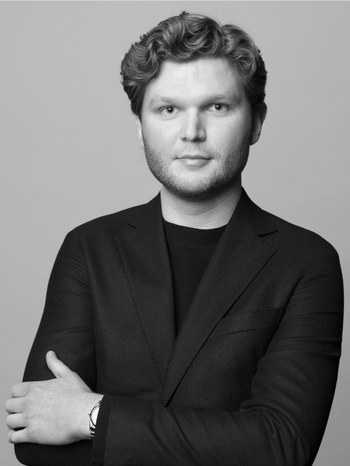Otto Schulz
a bar cabinet, Boet, Gothenburg 1930s.
Base veneered with oak, cabinet covered with antique patinated faux leather, geometric decoration with brass nails, so called "Bo-point", fold-down flap, interior lacquered in grey, maker's metal label. Length 125 cm, depth 41.5 cm, height 120.5 cm.
Wear and general patina. Somewhat dry surface, stains in places. Keys included.
Provenance
Director Gunnar Dahlstrand (1897-1955) and Lalla Dahlstrand (1903-1981), Bromma.
Exhibitions
The model was displayed at the collective exhibition "Boet 1935-36" in Gothenburg during the autumn/winter of 1935-36.
Literature
Otto Schulz (ed.), "Boet: Månadsskrift för Hemkultur, Hantverk och Konstindustri", 1935, model illustrated on p. 202.
Designer
Otto Schulz was a German-born designer and architect who spent the majority of his life working in Gothenburg, Sweden. In 1920, Schulz founded the company Boet together with Adolf Nordenberg, which became a highly influential interior and furniture manufacturer. Schulz's daring aesthetics have a multifaceted character that has contributed to important elements in both the Swedish Grace and Swedish Modern concepts. Schulz also published the magazine Boet, which, along with the store and business, helped to cement his role as central in interior design contexts. Some of Schulz's characteristics included developing techniques for which he took out patents, such as Bopoint, Bosaik, and Botarsia, all of which contributed to the furniture's distinctive aesthetics and quality.
Read more




































































































